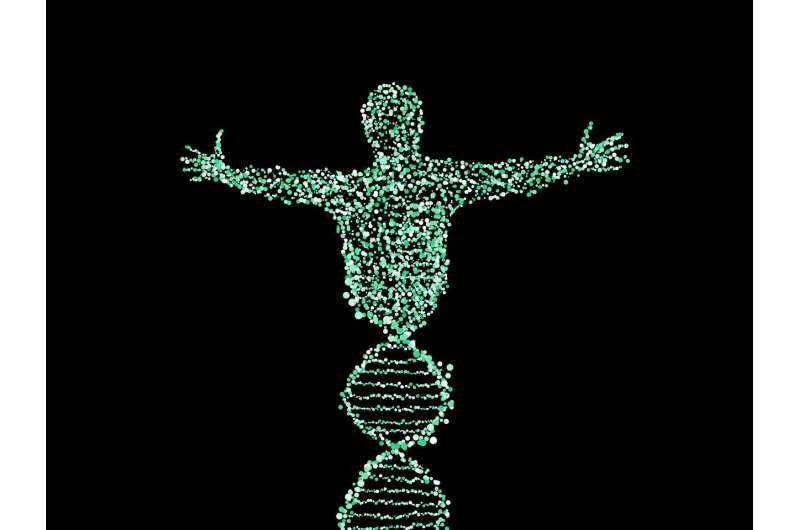Credit: Pixabay/CC0 Public Domain
In a study published in Science Advances, a team led by Prof. Zheng Ping from Kunming Institute of Zoology of the Chinese Academy of Sciences (CAS), collaborating with the Prof. Meng Feilong from Shanghai Institute of Biochemistry and Cell Biology, Center for Excellence in Molecular Cell Science, CAS, provided the first proof of concept demonstrating the region-specific regulations of double strand break (DSB) formation and repair in subtypes of neural stem/progenitor cells (NSPCs). In this study, the researchers identified a regional regulator, Filia, which is predominantly expressed in mouse hippocampal NSPCs after birth, and regulates DNA DSB formation.
Studying how stem cells maintain genomic stability can help advance the safe use of stem cells and understand the pathogenesis of related developmental diseases. Prof. Zheng's lab has identified that Filia regulates the genomic stability of embryonic stem cells, revealing its pathways, and found that mutations of human homologous genes cause embryonic development failure and recurrent abortion.
Compared with embryonic stem cells, tissue stem cells have only specific developmental potential. To investigate whether they have some common regulatory mechanisms for maintaining genomic stability, the researchers investigated the expression and function of Filia in NSPCs of mice. Intriguingly, they found that Filia was expressed in cultured hippocampal NSPCs and responded to exogenous DNA damage.
Filia-/- mice had impaired hippocampal NSPCs proliferation and neurogenesis. In addition, the complexity of dendrites in neurons were notably decreased in Filia-/- mice. Consequently, Filia-/- mice were deficient in learning, memory, and mood regulations.
To further understand how genomic instability leads to neurogenesis and dysfunction, the researchers performed high-throughput genome-wide translocation sequencing (HTGTS) to map the genome-wide DSBs.
The results showed that the density of DSBs hotspots were notably higher in Filia-/- NSPCs. Moreover, 65 genes (>80kb) including 16 RDCs genes were affected by Filia and displayed increased DSBs density in Filia-/- NSPCs under normal culture condition. Gene ontology (GO) enrichment analysis revealed that these genes were involved in regulation of neurogenesis, such as cell adhesion, neuronal migration and synaptic assembly. Notably, the positions of splicing in several RDCs genes overlapped with the positions of DSBs, suggesting that the replication stress-induced DSBs at RDCs genes might be able to affect splicing.
This study revealed that Filia specifically regulates genomic stability and neurogenesis of hippocampal NSPCs, and provided the first proof of concept demonstrating the region specific regulations of DSBs formation and repair in hippocampal NSPCs.
Stem cells are the basis of organism development and tissue homeostasis, and genomic stability is prerequisite for stem cell maintenance and regenerative medicine application.
More information: Jingzheng Li et al. Genome integrity and neurogenesis of postnatal hippocampal neural stem/progenitor cells require a unique regulator Filia, Science Advances (2020). DOI: 10.1126/sciadv.aba0682
Journal information: Science Advances
Provided by Chinese Academy of Sciences
























